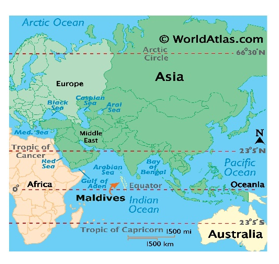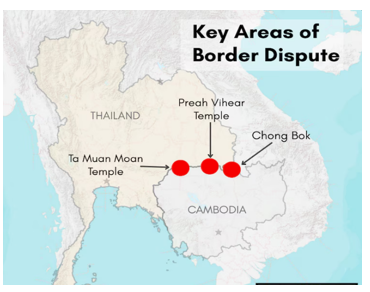

26th July 2025 (14 Topics)
Mains Issues
Context
On July 25, 2025, Prime Minister Narendra Modi and Maldivian President Dr. Mohamed Muizzu jointly released commemorative stamps to mark the 60th anniversary of the establishment of India–Maldives diplomatic relations.
India–Maldives Diplomatic Relations
Historical Context & Evolution of Ties
- Establishment of Relations (1965): Diplomatic ties began post-British withdrawal from Maldives.
- India’s Role Post-2008: India built wide-ranging ties with Maldivian political, military, and civil society stakeholders post-Maldives’ democratic transition.
- Operation Cactus (1988): India thwarted a coup attempt, showcasing commitment to Maldives' sovereignty.
Strategic and Geopolitical Significance
- Strategic Location: Maldives is positioned along vital Indian Ocean shipping lanes and south of Lakshadweep; crucial for India’s maritime surveillance.
- Eight Degree Channel: Separates India's Minicoy Island from the Maldives; a critical sea route for global trade and naval logistics.
- Indian Ocean Stability: Maldives’ peace aligns with India’s "Neighbourhood First" and SAGAR (Security and Growth for All in the Region) doctrine.
Cultural and Historical Linkages
- Buddhist Past: Until the 12th century, Maldives practised Vajrayana Buddhism; Indic civilizational influence is deeply rooted.
- People-to-People Ties: Common heritage fosters goodwill, bolstered by Indian diaspora and education ties.
Economic and Developmental Engagement
- Essential Commodities: India exports rice, medicines, vegetables, etc., critical for Maldives' sustenance.
- Infrastructure Assistance: Supply of cement, rock boulders; large-scale projects under India’s Line of Credit (LoC).
- Indian Tourists: India has been the top tourist source for Maldives post-COVID, contributing over 11% of tourist arrivals in 2023.
Education and Capacity Building
- Higher Education Destination: India is a preferred hub for Maldivian students; scholarships and medical education are key areas.
- Human Resource Development: Technical and professional training under Indian Technical and Economic Cooperation (ITEC) programme.
Defence and Security Cooperation
- Military Presence: India maintains a limited defence presence for humanitarian assistance, maritime surveillance, and radar integration.
- Joint Exercises:
- Dosti (Coast Guard with Sri Lanka),
- Ekuverin (Bilateral army exercise),
- Ekatha (Special forces/maritime exercises).
- Disaster Relief Partner: India helped during 2004 tsunami, drinking water shortages (2014), and COVID-19 crisis.
Challenges in India–Maldives Defence Ties
Geopolitical Rivalries
- China’s Strategic Presence:
- Chinese projects like Sinamale Bridge and port development under BRI signal a power shift.
- Risk of Maldives becoming part of China's ‘String of Pearls’ strategy in the Indian Ocean.
- Debt-Trap Diplomacy Concerns:
- Maldives has incurred significant debt to China, reducing strategic autonomy and raising sovereignty risks.
Internal Political Volatility
- "India Out" Campaign (2023):
- Spearheaded by opposition forces citing threats to sovereignty due to Indian troop presence.
- Led to public resentment and government pressure to remove Indian military personnel.
- Frequent Policy Reversals:
- Shift in power from India-friendly to pro-China regimes undermines strategic consistency.
Security Concerns
- Terrorism and Radicalization:
- Maldives has the highest per capita foreign fighters for ISIS from South Asia.
- Presence of Pakistan-backed jihadi networks raises red flags for India’s maritime and regional security.
- Maritime Vulnerabilities:
- Increasing militarization around strategic chokepoints like the Eight Degree Channel.
Way Forward
Multilateral and Trilateral Engagement
- IORA, SAGAR Initiative: Push Maldives’ participation in regional maritime cooperation frameworks.
- Trilateral Maritime Dialogue (India–Maldives–Sri Lanka): Revive and institutionalize it for counter-piracy, HADR (Humanitarian Assistance & Disaster Relief), and intel-sharing.
Infrastructure and Strategic Projects
- Fast-track Completion of Indian Projects: Projects like Greater Male Connectivity Project (GMCP) must serve as visible alternatives to Chinese-funded infrastructure.
- Dual-Use Facilities: Develop ports, radar stations, and airstrips that can serve both civilian and security purposes.
Soft Power & Public Diplomacy
- Civil-Military Assistance: Enhance India's visibility via humanitarian missions, medical diplomacy, and climate resilience efforts.
- Education and Cultural Linkages: Scholarships, Hindi/Malayalam language courses, and student exchanges to shape a positive Indian image.
Security Cooperation with Transparency
- Clarity on Military Presence: Clearly communicate the non-combat role of Indian military personnel (e.g., operating aircraft gifted to Maldives).
- Counterterrorism Training: Joint training programs for Maldivian forces to tackle radicalization and improve internal security.


Mains Issues
Context
The International Renewable Energy Association (IRENA) reported a record global addition of 582 GW in renewable energy capacity in 2024, yet fossil fuel use remains unabated, leading to persistent growth in global emissions.
Challenges in Global Energy Transition and Climate Mitigation
- Rising Renewable Capacity but Limited Climate Gains
- Annual Growth in Renewables:
- The world added 582 GW of renewable energy capacity in 2024, a 15% increase over 2023 (IRENA).
- This marks the highest annual rise in renewable capacity addition recorded to date.
- Fossil Fuel Dominance Persists:
- Despite this boom, fossil fuels still constitute over 70% of global electricity production.
- Fossil fuel electricity generation grew from 15,556 TWh (2000) to over 29,867 TWh (2022).
- Renewables' share rose from 3% (2000) to 29.9% (2022), but this has not displaced fossil generation in absolute terms.
- Global Imbalance in Renewable Deployment
- Uneven Regional Progress:
- Europe and China have led renewable deployment; Africa, West Asia, and parts of South Asia lag significantly.
- In 2024, China accounted for 36.4% of global renewable capacity addition (212 GW of the total 582 GW).
- Monopoly of Supply Chains:
- China dominates manufacturing and supply chains of solar panels, wind turbines, and batteries, leading to dependency risks for developing nations.
- Challenges to Transitioning Energy Systems
- Energy Security vs Climate Goals:
- Countries are prioritising energy security due to geopolitical tensions (e.g., Russia-Ukraine war), thereby reinforcing fossil fuel dependence.
- Technical and Economic Constraints:
- Renewable intermittency and insufficient grid infrastructure hinder large-scale transition, particularly in developing economies.
- Limited storage solutions and high costs also obstruct full-scale replacement of thermal power.
- Misalignment Between Installed Capacity and Emission Reduction
- Electricity:
- Electricity is only 20% of final global energy consumption; sectors like transport and industry still rely heavily on fossil fuels.
- Hence, emissions from oil and gas use in these sectors continue to rise despite the decarbonisation of electricity production.
Way Forward
- Phasing Out Fossil Subsidies: Redirect fossil fuel subsidies to storage and green hydrogen development.
- Global Technology Transfer: Encourage North-South collaboration on renewable technologies and battery storage.
- Universal Energy Access: Ensure that energy transition policies do not compromise access in the Global South.
- Diversified Supply Chains: Reduce dependency on single-nation dominance (like China) by encouraging decentralised manufacturing.
- Integrated Climate Policy: Decarbonisation must expand to sectors beyond electricity—transport (EVs, biofuels), heating, and industry (green steel, hydrogen).
While renewables are expanding, they are merely supplementing—not replacing—fossil fuel-based generation. The absolute use of fossil fuels continues to grow, driven by rising global energy demand.
|
International Renewable Energy Agency (IRENA) Establishment & Headquarters
Membership
Objective
Reports: Publishes flagship reports like:
India and IRENA
|


Prelims Articles
Context
The Election Commission of India has appointed the Returning Officer and Assistant Returning Officers for the conduct of the Vice-Presidential Election, 2025.
Constitutional Basis:
- The Vice-President of India is elected under the authority of Article 66 of the Indian Constitution.
- The Election Commission of India (ECI) derives its power from Article 324 to conduct such elections.
Governing Law and Rules:
- The election is conducted as per The Presidential and Vice-Presidential Elections Act, 1952.
- Supplemented by The Presidential and Vice-Presidential Elections Rules, 1974.
Electoral College:
- The Vice-President is elected by an electoral college comprising only the members of both Houses of Parliament (Lok Sabha and Rajya Sabha) using proportional representation by means of a single transferable vote, and voting is conducted by secret ballot.
- Nominated members are also eligible to vote in this election (unlike in the Presidential election).
Returning Officer Appointment:
- Under Section 3 of the 1952 Act, the ECI appoints a Returning Officer in consultation with the Central Government.
- The Secretary General of Rajya Sabha is conventionally appointed as the Returning Officer if the Secretary General of Lok Sabha was appointed in the previous election, maintaining a rotational convention.


Prelims Articles
Context
The Supreme Court of India is progressively integrating Artificial Intelligence (AI) and Machine Learning (ML) tools in judicial processes including transcription, translation, e-filing, and case management.
AI in Judicial Transcription:
- AI and ML tools are being used for transcribing oral arguments in Constitution Bench
- The transcriptions are made publicly accessible via the Supreme Court’s official website.
AI-Based Judgment Translation:
- Judgments are translated from English to 18 Indian languages using AI/ML in collaboration with NIC.
- Languages include: Assamese, Bengali, Garo, Gujarati, Hindi, Kannada, Kashmiri, Khasi, Konkani, Malayalam, Marathi, Nepali, Odia, Punjabi, Santali, Tamil, Telugu, and Urdu.
- Translations are available on the eSCR portal of the Supreme Court.
AI in e-Filing and Defect Identification:
- AI tools are integrated with electronic filing software for identification of procedural defects in petitions.
- The system is developed in collaboration with IIT Madras.
- Access to this prototype has been provided to 200 Advocates-on-Record.
Integration with Case Management System:
- AI tools are being tested for metadata extraction, defect curing, and improving filing accuracy.
- These tools are proposed to be integrated with the Integrated Case Management & Information System (ICMIS).
SUPACE Platform – Experimental Stage:
- SUPACE (Supreme Court Portal for Assistance in Court Efficiency) is an AI-based tool designed to:
- Understand the factual matrix of cases.
- Conduct intelligent search of precedents.
- Assist in case identification.
- Currently in the experimental phase, pending deployment of high-end processing units like GPUs and TPUs.


Prelims Articles
Context
The Supreme Court dismissed a petition seeking delimitation in Andhra Pradesh and Telangana, citing constitutional constraints under Article 170.
Delimitation in India – Legal Basis:
- Delimitation refers to the redrawing of boundaries of electoral constituencies to reflect population changes.
- Article 82 of the Constitution provides for the delimitation of Lok Sabha constituencies post each census, while Article 170 governs the delimitation of State Legislative Assemblies.
- A constitutional freeze on delimitation was imposed by the 84th Constitutional Amendment Act, 2001, and extended by the 87th Amendment till the first census after 2026.
Supreme Court’s Verdict (2024):
- The Court ruled that Andhra Pradesh and Telangana are barred from delimitation before the post-2026 census due to the express provision of Article 170(3).
- Union Territories, such as Jammu & Kashmir, are not subject to the same constitutional bar, hence the 2022 delimitation in J&K using 2011 Census data was legally valid.
- The Court emphasised that treating States and Union Territories as equals in this context would violate the principle of constitutional distinction.
Wider Constitutional and Political Implications:
- Judicial direction to initiate early delimitation in States would destabilise the uniform electoral framework across India.
- It would also invite legal challenges from other States excluded from delimitation, such as Assam, Arunachal Pradesh, Nagaland, and Manipur, as per the 2021 notification under the Delimitation Act, 2002.
- The judgment reaffirmed that delimitation is a political and constitutional process, not subject to judicial prescription unless constitutional mandates are violated.


Prelims Articles
Context
MoFPI released findings from a 2022 NABCONS study assessing post-harvest losses across 54 agri-commodities in 15 agro-climatic zones during 2020–22.
Extent of Post-Harvest Losses (as per NABCONS 2022 Study):
- Cereals:89% – 5.92%
- Pulses:65% – 6.74%
- Fruits:02% – 15.05%
- Vegetables:87% – 11.61%
- Milk:87%, Meat: 2.34%, Marine Fisheries: 8.76%, Egg: 6.03%
- Losses largely due to inefficient harvesting, handling, storage, and transportation.
Key Government Schemes Addressing Post-Harvest Losses:
- MIDH (Mission for Integrated Development of Horticulture): Promotes cold storages, ripening chambers, pack houses for horticultural produce.
- Agriculture Infrastructure Fund (AIF): Offers medium/long-term debt financing for building warehousing, cold chains, processing units.
- Agricultural Marketing Infrastructure (AMI): Provides support for storage and market infrastructure development.
- e-NAM (National Agriculture Market): Digitally integrates markets; enhances price discovery and minimizes transit losses.
- 10,000 FPO Scheme: Encourages aggregation, processing, and collective marketing.
- PMKSY (Pradhan Mantri Kisan Sampada Yojana): Since 2016–17, aims to reduce agri-waste through post-harvest and processing infrastructure.

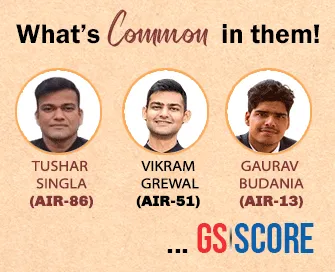
Prelims Articles
Context
As of 30 June 2025, 16,912 Jan Aushadhi Kendras (JAKs) are operational; target revised to 20,000 Kendras by 31 March 2026.
Pradhan Mantri Bhartiya Janaushadhi Pariyojana (PMBJP)
About the Scheme:
- Launched by: Government of India (Under Dept. of Pharmaceuticals)
- Nodal Implementing Agency: Pharmaceuticals and Medical Devices Bureau of India (PMBI)
- Objective: Provide quality generic medicines at affordable prices to all.
- Discount Range: Generic medicines sold at 50%–80% cheaper than branded equivalents.
Jan Aushadhi Kendras (JAKs):
- Number of functional Kendras (as on 30.06.2025): 16,912
- Target by 31.03.2026: 20,000 Kendras
Product Basket:
- 2,110 medicines and 315 surgicals/medical consumables/devices
- Covers therapeutic areas like cardiovascular, anti-diabetic, anti-cancer, anti-infectives, gastro-intestinal, etc.
- Planned expansion: 2,200 medicines and 320 surgicals/consumables by 31 March 2026


Prelims Articles
Context
The Government has approved an additional ?500 crore corpus under the TDF Scheme to support Deep-Tech and cutting-edge defence projects.
Technology Development Fund (TDF) Scheme:
- Launched by: Ministry of Defence
- Implementing Agency: Defence Research and Development Organisation (DRDO)
- Objective: Facilitate indigenous development of defence technologies by MSMEs and startups, including collaboration with academia.
- Latest Expansion: Additional ?500 crore allocated for supporting Deep-Tech projects as a separate vertical.
Research Areas Covered:
- Powder Metallurgy, Aerospace Systems, Smart Textiles
- AI & Robotics, Quantum Technology, High Power Microwaves
- Advanced Nano-materials, Photonic Technologies, Semiconductor-based Sensors
- Additive Manufacturing, Desert Warfare Technologies, CW Laser Sources


Prelims Articles
Context
The Union Cabinet has approved the implementation of PM Viksit Bharat Rozgar Yojana (PM-VBRY) from 1st August 2025 to incentivize job creation in India.
M Viksit Bharat Rozgar Yojana (PM-VBRY)
Objective and Design:
- PM-VBRY is an Employment Linked Incentive (ELI) Scheme with an outlay of ?99,446 crore.
- It aims to generate over 3.5 crore jobs from 01 August 2025 to 31 July 2027.
- It supports the Government’s Viksit Bharat vision by targeting inclusive and sustainable employment.
Structure of the Scheme:
- Part A – Incentive to First-Time Employees:
- Targets EPFO-registered new employees.
- Offers EPF wage support up to ?15,000 in two installments.
- Eligibility: Salaried individuals earning up to ?1 lakh/month.
- A portion of the benefit is retained in a savings/deposit account to promote saving habits.
- Part B – Incentive to Employers:
- Applies across sectors, with special focus on the manufacturing sector.
- Applicable to additional employees drawing salary up to ?1 lakh/month.
- Duration: 2 years; extended to 3rd and 4th years for manufacturing.
- Minimum hiring requirement:
- At least 2 new employees for firms with <50 employees.
- At least 5 new employees for firms with ?50 employees.
Payment Mechanism:
- Part A payments: Direct Benefit Transfer (DBT) using Aadhaar-Based Payment System (ABPS).
- Part B payments: Credited to PAN-linked employer accounts.


Prelims Articles
Context
Thailand declares martial law along Cambodia border; PM's 'state of war' warning
Background:
- Nature: Territorial dispute over border demarcation and temple ownership.
- Disputed Sites:
- Preah Vihear Temple (UNESCO World Heritage Site)
- Prasat Ta Muen Thom Temple Complex
- Colonial Legacy: Based on a 1907 map drawn during French colonial rule in Cambodia; Thailand contests its accuracy.
- Ethnic and Historical Roots: Both temples were built by the Khmer Empire (11th–12th century), currently lying near the Dângrêk Mountains.
Strategic and Cultural Significance:
- Preah Vihear Temple:
- Hindu temple dedicated to Lord Shiva.
- Located atop a cliff, offering strategic military advantage.
- Cambodia secured UNESCO status in 2008, triggering Thai backlash.
- Prasat Ta Muen Thom Complex:
- Shiva temple; part of a tri-complex with religious and medicinal roles.
- Located along the ancient Khmer road system, indicating its importance in trade and religion.
International Legal Dimension
- ICJ Rulings:
- 1962: Preah Vihear Temple awarded to Cambodia.
- 2013: ICJ reaffirmed its verdict, stating the land around the temple also belongs to Cambodia.
- Thailand's Position: Accepted 1962 ruling but rejected 2013 clarification.
- Proposed Demilitarized Zone: ICJ suggested this in 2013 to prevent future clashes.
Recent Development:
- Military Escalation:
- Armed clashes resumed in the Dangrek Mountains region (2024–25).
- Use of airstrikes and heavy artillery.
- Diplomatic Fallout:
- Borders closed.
- Cambodia imposed trade restrictions on Thai imports.
- Embassies scaled down.

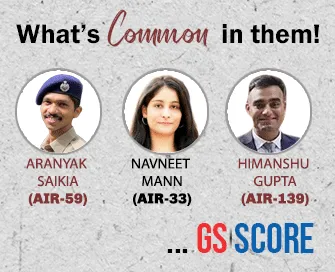
Prelims Articles
Context
The Ministry of Agriculture highlighted the objectives and functioning of the CROPIC app as a digital support tool under the Pradhan Mantri Fasal Bima Yojana (PMFBY).
What is CROPIC?
- CROPIC (Collection of Real-Time Observations and Photographs of Crops) is a digital application developed under PMFBY to collect geotagged, time-series photographs of crop fields.
- It enables near real-time crop surveillance, verification of insured crops, and assessment of damage due to localised calamities.
Key Stakeholders:
- Data is crowdsourced from farmers and field coordinators using smartphones.
- The app facilitates monitoring by insurance companies, State governments, and agricultural officers.
Objectives of CROPIC:
- To enhance transparency in crop insurance claim validation.
- To provide visual evidence of crop health and damage due to climatic perils.
- To support yield estimation models like YESTECH for actuarial and policy purposes.
- To strengthen data-driven decision-making in the crop insurance ecosystem.

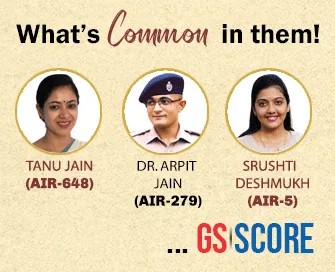
Editorials
Context
The Government of India has proposed an extension of President’s Rule in Manipur by six more months amidst ongoing ethnic violence and political paralysis.
President’s Rule: A Temporary Mechanism, Not a Governance Model
- Nature of President’s Rule: President’s Rule is constitutionally intended as a temporary measure under Article 356, invoked when there is a failure of constitutional machinery in a state.
- Lack of Political Resolution: The Centre’s proposal to extend President’s Rule raises concerns over the failure to restore a popular, elected government or meaningful civil administration in Manipur.
- Democratic Deficit in Governance: The absence of a representative government undermines federal principles and democratic accountability, especially in a conflict-ridden region requiring political negotiation.
Ground Situation: Ethnic Tensions and Humanitarian Crisis
- Fragile Law and Order: While large-scale violence has reduced since November 2023, ethnic tensions remain high, particularly between the Meitei and Kuki-Zo communities.
- Failure of Peace Efforts: Government-led reconciliation initiatives have made limited progress, with stalled talks, delayed implementation of relocation for displaced persons, and mistrust among stakeholders.
- Arms and Displacement Crisis: Over 57,000 people remain displaced and nearly 3,000 looted arms are still unaccounted for, highlighting the gravity of the law and order breakdown.
Political Stalemate and the Need for Restored Leadership
- Inadequate Central Response: Despite Union Home Ministry efforts, lack of sustained dialogue and insufficient political outreach have failed to build trust across ethnic divides.
- Regional Representation Demands: NDA legislators from both Meitei and Naga communities have demanded the restoration of an elected government, viewing President’s Rule as disempowering.
- Political Process as a Peace Prerequisite: The restoration of a representative political leadership is critical for long-term peace and institutional reconciliation in the state.
Practice Question
"The continued imposition of President’s Rule in Manipur highlights the limitations of centralised governance in resolving deep-rooted ethnic conflicts." Critically examine the constitutional, political, and social implications of prolonged central rule in conflict-affected regions. (250 words)


Editorials
Context
India commemorates the 26th anniversary of the Kargil War (July 26, 1999), coinciding with the recent counter-terrorism operation Sindoor following the Pahalgam terror attack (April–May 2025).
Kargil War: The Turning Point in India's Conventional Security Doctrine
- War Under a Nuclear Overhang: The Kargil conflict was the first military engagement between nuclear-armed India and Pakistan post-1998 tests, demonstrating the feasibility of limited war under nuclear deterrence.
- Structural and Intelligence Reforms Post-Kargil: The Kargil Review Committee led to key institutional reforms including the establishment of the Defence Intelligence Agency (2002), NTRO (2004), and permanent National Security Adviser (NSA) position.
- Modernisation and Doctrinal Shift: India’s Cold Start Doctrine evolved post-Kargil to enable rapid and calibrated military responses, while significant attention was given to mountain warfare capabilities and jointness across the tri-services.
India's Long and Evolving Fight Against Terrorism
- Initial Years of Restraint: Despite major terror incidents such as the IC-814 hijacking (1999), Parliament attack (2001), and 26/11 (2008), India refrained from direct retaliatory action against Pakistan.
- Policy Shift Post-2016: Following the Uri attack, India conducted cross-border surgical strikes (2016) and later, the Balakot airstrike (2019) after the Pulwama attack, marking a decisive shift in counter-terrorism posture.
- Operationalisation of Deterrence Doctrine: The post-2016 era has witnessed the translation of political intent into calibrated military responses, setting new precedents for preemptive and punitive actions against cross-border terror infrastructure.
Operation Sindoor (2025): A Strategic Watershed in Counter-Terrorism
- Retaliatory Precision Strikes: After the Pahalgam attack (April 2025) that killed 26 tourists, India launched Operation Sindoor (May 7–10), targeting nine terror bases and eleven Pakistani military airbases within 96 hours.
- Targeting Pakistan’s Strategic Depth: Strikes reportedly included the BrahMos missile attack on Nur Khan Base near Kirana Hills, potentially disabling a major nuclear storage site, showcasing India’s enhanced strike capabilities.
- Doctrinal Maturity and Technological Leap: Operation Sindoor underscores the successful integration of high-end platforms like BrahMos, Rafale, Apache, and S-400, aligned with India’s ‘Make in India’ self-reliance initiative in defence.
Practice Question
"Kargil was a wake-up call, while Pahalgam has been a statement of strategic resolve." In the light of this statement, critically examine the evolution of India’s conventional and counter-terrorism military doctrines since 1999. (250 words)


Editorials
Context
India and the United Kingdom concluded negotiations on the Comprehensive Economic and Trade Agreement (CETA), marking the largest UK trade deal since Brexit.
Strategic Importance of India–UK FTA
- Post-Brexit Global Strategy: The FTA serves as the United Kingdom’s largest trade deal post-Brexit, aiming to realise the long-pursued ‘Global Britain’ vision through economic integration with India.
- India’s Global Manufacturing Push: The agreement aligns with India's “Make in India for the World” agenda, providing improved access to European markets while securing investment and regulatory cooperation.
- Sectoral Coverage and Geopolitical Balancing: The India–UK Roadmap 2030 underpins the FTA, encompassing collaboration in climate action, critical minerals, and maritime security, reducing both countries' overdependence on China.
Economic Gains and Mutual Benefits
- Trade and Investment Expansion: The UK projects an increase of £4.8 billion in annual GDP with expanded investment flows, while India anticipates a $34 billion bilateral trade rise over five years.
- Market Access and Tariff Reductions: High-tariff Indian exports like rice and textiles gain improved access to the UK, while premium British products such as Scotch whisky and chocolates benefit from phased duty reductions.
- Value Chain and SME Integration: The FTA encourages greater participation of Indian SMEs from hubs like Tirupur and Surat in UK-based value chains, reinforcing transnational manufacturing linkages.
Implementation Challenges and Policy Concerns
- Regulatory and Non-Tariff Barriers: India remains cautious about UK's stringent sanitary and phytosanitary standards and demands greater alignment in rules governing services and procurement.
- Labour Mobility and Mode 4 Limitations: India’s demands on Mode 4—ease of movement for professionals—remain largely unmet due to the UK’s restrictive visa and financial regulations.
- Parliamentary Scrutiny and Delays: The FTA's full operationalisation depends on UK parliamentary approval and resolution of contentious issues like carbon border tax and digital market protections.
Practice Question
“The India–UK Free Trade Agreement is more than a tariff-reduction pact; it is a geopolitical and economic strategic alignment.” Critically examine the multidimensional implications of the India–UK FTA in the context of post-Brexit global trade realignments. (250 words)


